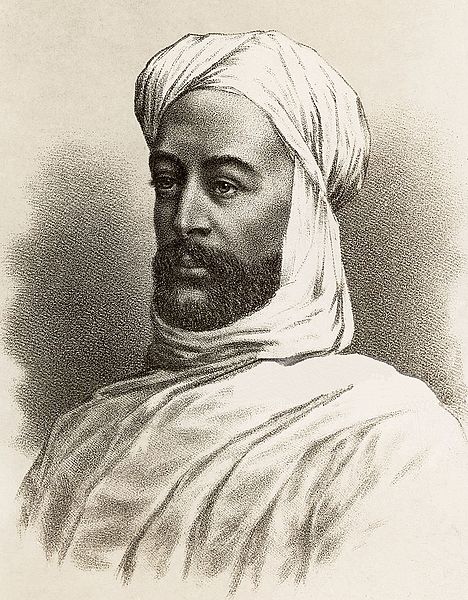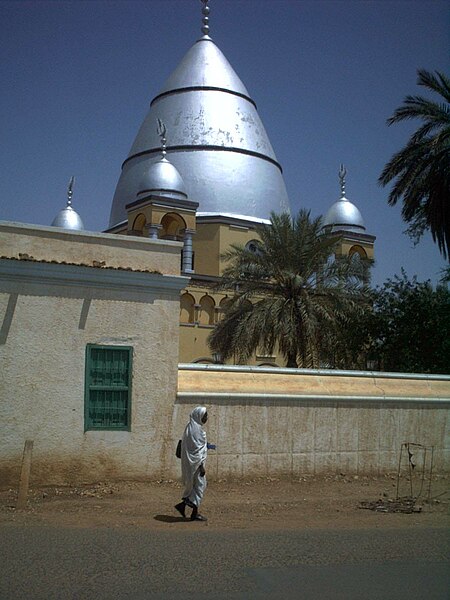The Battle of Abu Klea, or the Battle of Abu Tulayh took place between 16 and 18 January 1885, at Abu Klea, Sudan, between the British Desert Column and Mahdist forces encamped near Abu Klea. The Desert Column, a force of approximately 1,400 soldiers, started from Korti, Sudan on 30 December 1884; the Desert Column's mission, in a joint effort titled "The Gordon Relief Expedition", was to march across the Bayuda Desert to the aid of General Charles George Gordon at Khartoum, Sudan, who was besieged there by Mahdist forces.
The Battle of Abu Klea by William Barnes Wollen
Photograph of two Sikh soldiers of the Camel Corps, by Felice Beato, ca. 1884/85
The Egyptian Campaign Memorial in Brighton, East Sussex, England.
Muhammad Ahmad bin Abdullah bin Fahal was a Sudanese religious and political leader. In 1881, he claimed to be the Mahdi, and led a war against Ottoman-Egyptian rule in Sudan which culminated in a remarkable victory over the British in the Siege of Khartoum, while also slowing and defeating the British during their unsuccessful Nile Expedition to resupply the Khartoum Garrison. He created a vast Islamic state extending from the Red Sea to Central Africa, and founded a movement that remained influential in Sudan a century later.
Artistic representation of Muhammad Ahmad
A depiction of the British square at the Battle of Abu Klea, during the Mahdist War, 1885
The rebuilt tomb of Muhammad Ahmad in Omdurman





